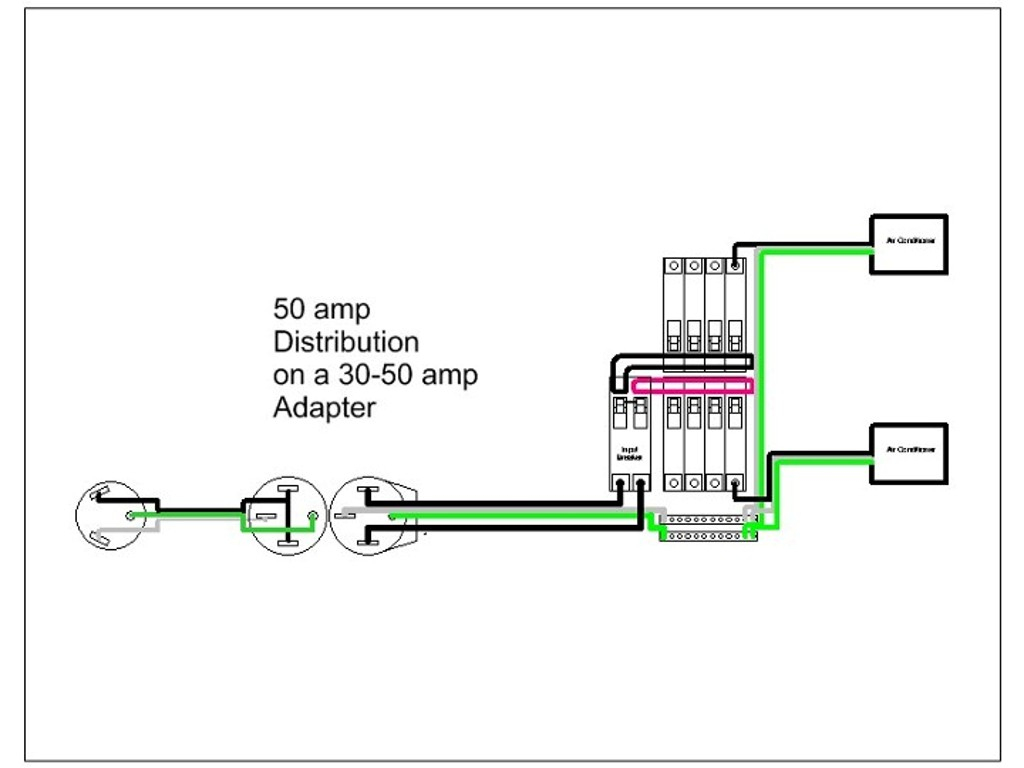

A 1000-watt generator is about right for a small RV or if you don’t need to run major systems like air conditioning. Generators are rated in watts rather than amps. Typically, they don’t provide as much RV power as shore power does, but that really depends on the size of the generator. Generators work like RV shore power as they plug into your AC system and provide AC power. Left to Right: Water inlet, outdoor shower, 50Amp Shore Power hookup. Remember to turn that on after you hook up to electricity, and turn it off when you disconnect to leave. When you connect to shore power at an RV park, there will be a circuit breaker on the pedestal. Typically, the worst that happens is you blow fuses, but you could damage the power source or your trailer. You can connect your RV to a lower amp power source, but if you aren’t careful, it can be dangerous you can damage the electrical systems if you try to draw more power than the shore power line is rated for. Your RV will be set up to either use 50 amps or 30 amps depending on the size of the RV. To charge an RV from a house, the RV would need to connect to the home system using either an adapter or the house would need a designated 30 or 50 amp connection. You can connect your RV to a line running from someone’s house, but use caution. The most common RV connections are 30 amps and 50 amps. The available power you can draw on is measured in amps. RV shore power is when you can plug your RV into an AC electrical grid.

When you are in motion, if you are plugged into a vehicle using the trailer adapter, the vehicle engine should charge your battery. Power sources include shore power, a generator, a vehicle engine, or a solar panel. Your battery is charging any time an external power source is connected and providing power to your RV. They can’t drive the air conditioning or heating systems either. The amount of power the batteries can provide on their own is fairly low - they can run the lights, water pump, and small appliances for the better part of the day, but that is about it. The batteries provide your RV with a source of power when no external power is available. Reference our RV electrical system schematic above as well.

Let’s take a quick look at each of the sources of power for an RV. BUT if you are running off a battery, say while boondocking, use just the basics, and use them sparingly!
#30 amp rv power converter wiring diagram free
In short, if you’re plugged into a power source, feel free to enjoy and indulge in all the comforts of home. TIP: Use your RV electricity sparingly when unplugged If you don’t have shore power, then you are running off the DC system, which can run the essentials like the lights and water pump for a few days. Most RVs are set up so that if you have RV shore power (more about that later), you can run pretty much everything in the RV. RVs with an inverter will have specially marked wall outlets that run on the DC battery system but provide AC power. Along with the RV power converter, many rigs also have an inverter, which is a device that turns DC power into AC power. The device that does this is called a converter. The two RV electrical systems are connected so that if you have AC power coming into your RV, it will charge up the batteries for the DC system. The AC system is capable of generating a lot more power than the DC system, which is limited by your RV batteries. Your lights, water pump, fans, TV, and radio run off the DC power system.

Big appliances like the air conditioning, microwave, and power outlets, run off the AC power system. The AC system is powered by plugging your trailer into an external AC power source, while the DC system runs off one or more battery systems installed in your RV. There is also a DC (direct current) system that works similarly to the one in a car. There is an AC (alternating current) system that is similar to the one in a typical home. The majority of rigs have two electrical RV systems. If you become an RV owner, long-term care and maintenance is a more complicated subject. Read on for a basic understanding of your RV electricity systems, how they work, and what to be aware of in terms of safety. Whether you are renting an RV on Outdoorsy for the first time or purchasing an RV for travel or to rent out to others, it’s important to learn the basics of RV electrical systems. Blog Featured Top Blogs How-To Guides Power & Electric


 0 kommentar(er)
0 kommentar(er)
